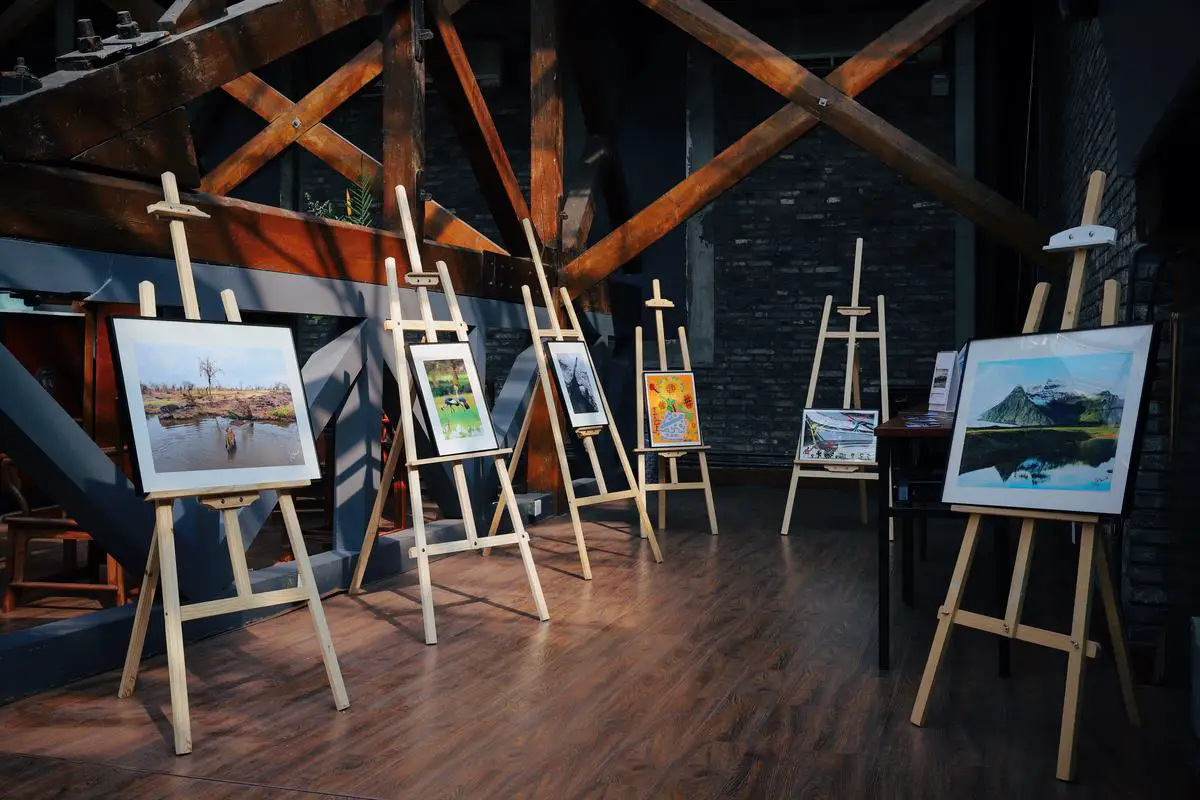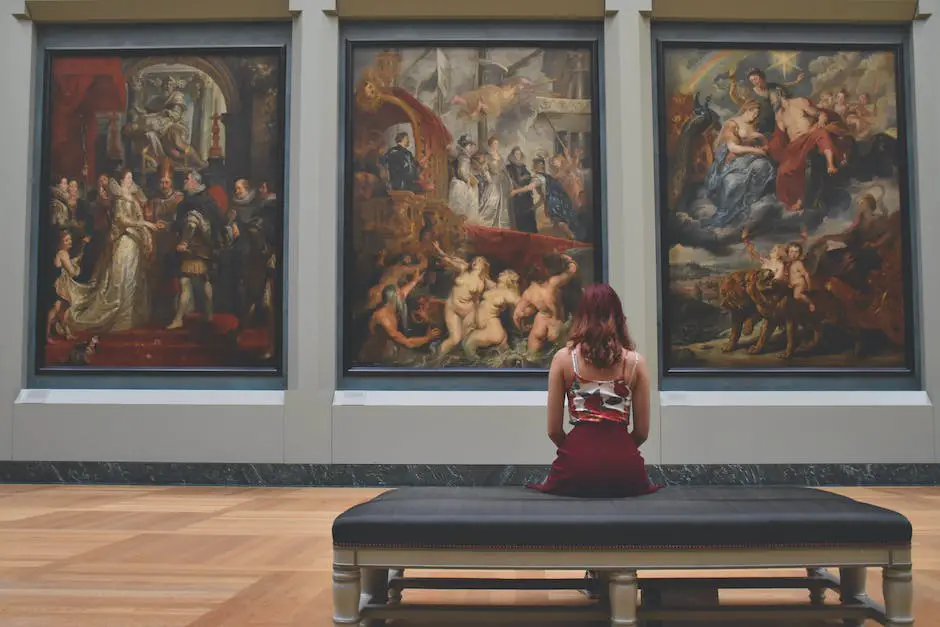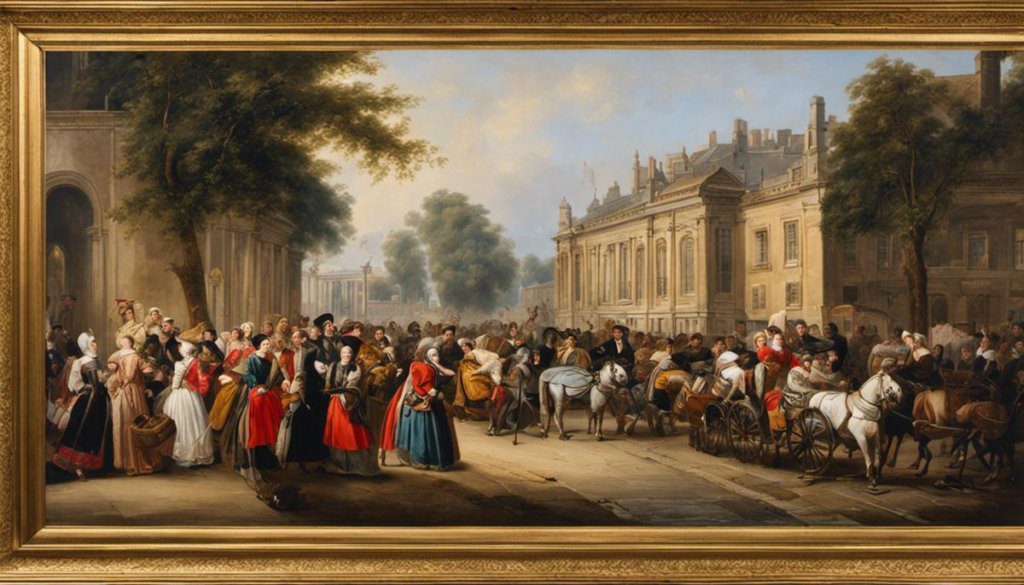The hallowed hallways of British art galleries carry with them the deep resonance of history, holding firm to centuries-old pieces of art that depict the stories and spirit of eras gone by. Each artwork, whether it be an iconic painting, a skillfully chiselled sculpture, or a century-old photograph, is a piece of historic relevance that whispers tales of yonder. Juxtaposed with this ancient elegance are the modern and contemporary forms of creativity, vibrant in their novelty, challenging societal norms and conventions. As one unravels the magic woven in these art pieces, it becomes impossible not to acknowledge the influence British galleries exert on the ever-evolving artistic landscape.
Discovery of Historic Art in British Galleries
Step reverently into the hallowed halls of Britain’s vast galleries and one soon glimpses the rich tapestry of time that unfolds before our eyes. These venerated spaces hold treasures from different epochs, reflecting the tumultuous chronicles of human evolution through the lens of art. Each piece presents its own unique narrative, extending an invitation to its beholders to embark on a journey through centuries of artistic heritage.
Taking centre stage at the revered British Museum, we uncover ‘The Rosetta Stone’. This enigmatic artefact not only proffers deep insights about the ancient Egyptian culture, but its hieroglyphics held the key to deciphering complexities of their written language, thus illuminating many a mystery of this intriguing civilisation. Equally transporting is ‘The Fighting Temeraire’ by J.M.W. Turner, gracefully nestled within The National Gallery. This romantic, evocative painting surges with nuanced emotion, showcasing the melancholic demise of an old warship. From its incandescent sunset to the stark ghostly ship, Turner’s master craftsmanship captivates audiences with its poignant metaphor for an era fading into obsolescence.
Discovering such timeless art pieces in British galleries firstly illustrates the inextricable link between art and history. Sparking interest among artists, historians, and enthusiasts alike, these diverse collections bear testament to human creativity, echoing the voices of our ancestors through whispers of paint strokes and chisel marks. With each visit, one is left with inspiring impressions, stirring fresh appreciation for the power of our collective artistic legacy, standing as a testament to the enduring allure of history and art entwined. Collectively, these galleries and their storied contents empower us to delve deeper into the ever-fascinating chronicle of human artistic expression.

Modern & Contemporary Art in British Galleries

Impact & Influence of British Galleries on Artists
The contemporary artistic scene in Britain owes much of its drive for innovation and change to the established centres of artistic expression. In particular, the Tate Modern has been instrumental in defining new norms in the art world. By housing the works of radical artists, they’ve carved out a niche for themselves as a trailblazer of modern art, aiding in dismantling entrenched conventions. Eccentric figures like Damien Hirst, Ai Weiwei, and Marina Abramović, have all found a home at Tate Modern. For instance, Hirst’s much-debated work “The Physical Impossibility of Death in the Mind of Someone Living” shook the artistic world, challenging traditional perspectives with its deeply philosophical exploration of mortality.
Other British galleries are equally influential in shaking the foundations of the traditional art scene. The Gallery of Modern Art in Scotland merits mention here, inextricably weaving art and culture by showcasing artists such as Eduardo Paolozzi and David Hockney. Their introduction of pop culture elements in traditional art forms have unrestrainedly challenged the artistic status quo, thus contributing to the metamorphosis of artistry in Britain. These artistic homes have indirectly encouraged artists to break the mould, broadening the definition of art far beyond the restricted traditional format.
The success of radical artworks within these venerable galleries has catalysed the acceptance of contemporary art forms in society. The immense influence of these art houses lies in their fostering creativity as an exploration rather than a mere practice, thus pushing the boundaries of conventional art and design. This ever-evolving dynamic has perpetually invigorated the British art scene, opening the gates to myriad forms of groundbreaking expression that could perhaps have been overlooked or dismissed in less engaging galleries. It’s a testament to the power of creativity and human innovation, which continue to redefine our understanding of art.

Photo by springwellion on Unsplash
Community & Educational Aims of British Galleries
British galleries are not just momentous repositories featuring seminal works of art; they also play a pivotal role as social institutions woven into the fabric of the community. They are spaces where art is no longer simply a passive observation but a thriving interaction between viewer and creator. Galleries such as the Whitworth in Manchester, for instance, host activities that extend beyond merely showcasing the works of art. They provide educational talks, artist-led workshops, and community outreach programmes, all designed to foster a sense of curiosity and an appreciation of the arts amongst the community.
Moreover, British galleries facilitate invaluable learning environments wherein individuals, regardless of their background or familiarity with art, can engage in open dialogue and critical thought. By understanding the role of art within historical contexts, it enables us to reflect on contemporary issues. Furthermore, many galleries work closely with educational establishments, ensuring diverse learning resources are readily accessible. For instance, the Tate Modern provides support to teachers, offering relevant courses and resources that inspire innovative ways to teach art in the classroom.
Equally as vital is the role British galleries play in regeneration efforts, particularly for local economies. Stimulating economic growth through job creation and thriving cafe or shop fronts, they also increase tourism in their respective locales. For example, Tate Liverpool’s establishment in the 80s was instrumental in the regeneration of the now bustling Albert Dock area. Thus, the influence of British galleries extends beyond serving as cultural hubs. They very much form an integral part of socio-economic dynamics, granting them a vital presence in both the country’s cultural landscape and its community life.

British galleries, in their immense grandeur and quiet charm, have proven themselves to be much more than just spaces for exhibiting art. They have emerged as significant platforms for community outreach and educational initiatives that promote arts education, stimulate cultural exchange, and crucially, foster communal harmony. As they continue to inspire, educate and influence, these galleries embody a powerful blend of past and present, continuing to shape ideas, creativity, and connections. Hence, exploring and understanding these gems of artistic expression remains a fascinating journey, one that paints the picture of culture, society, and human experience in the truest sense.
Recommend0 recommendationsPublished in Art History







Responses